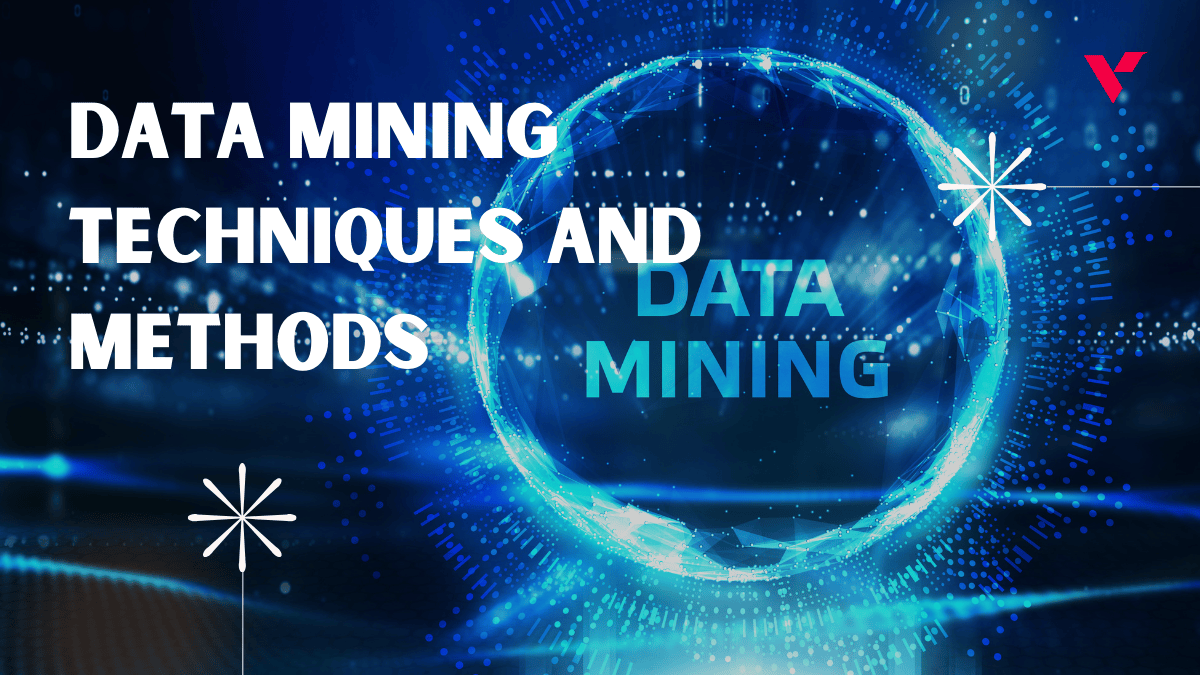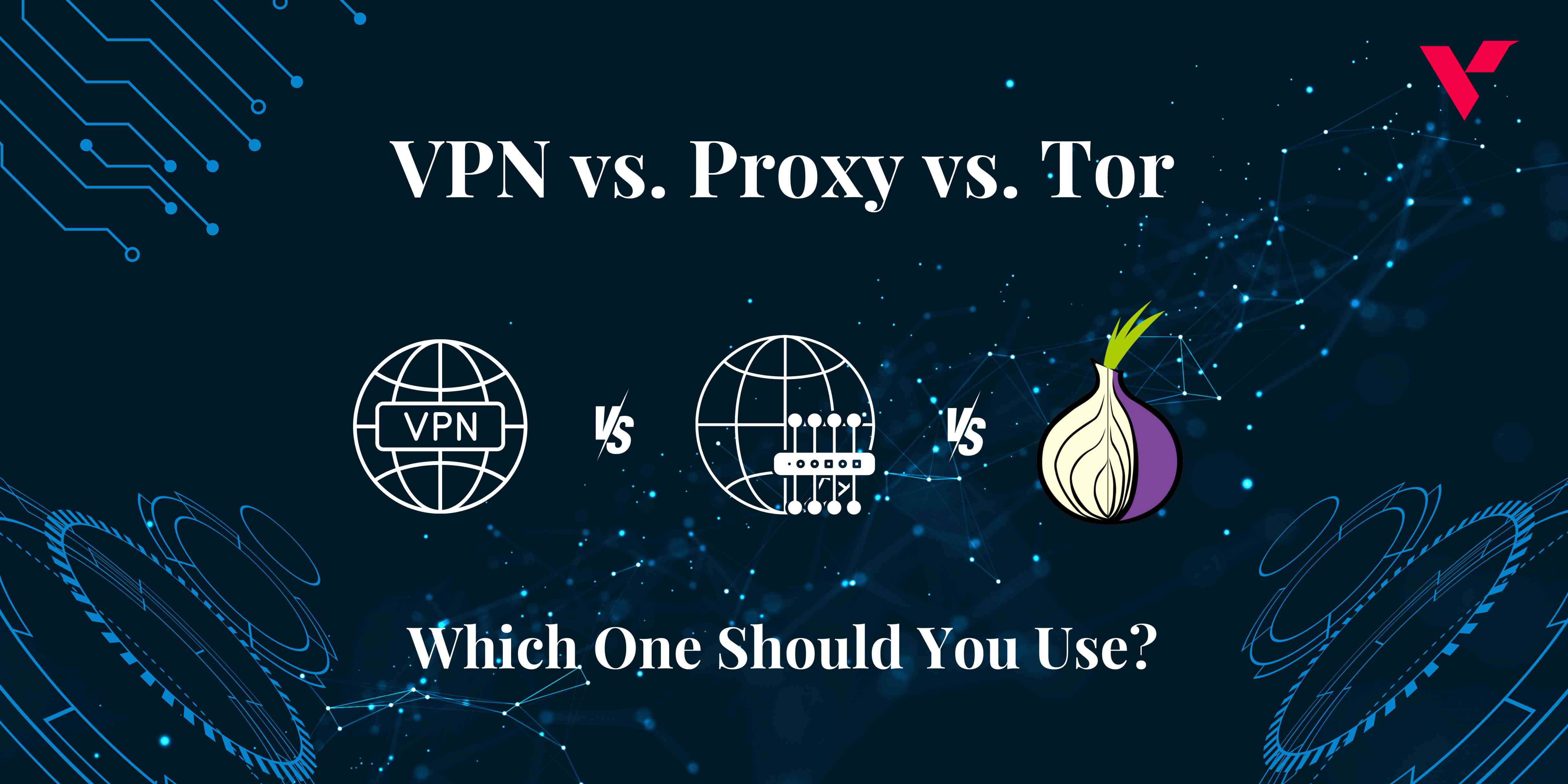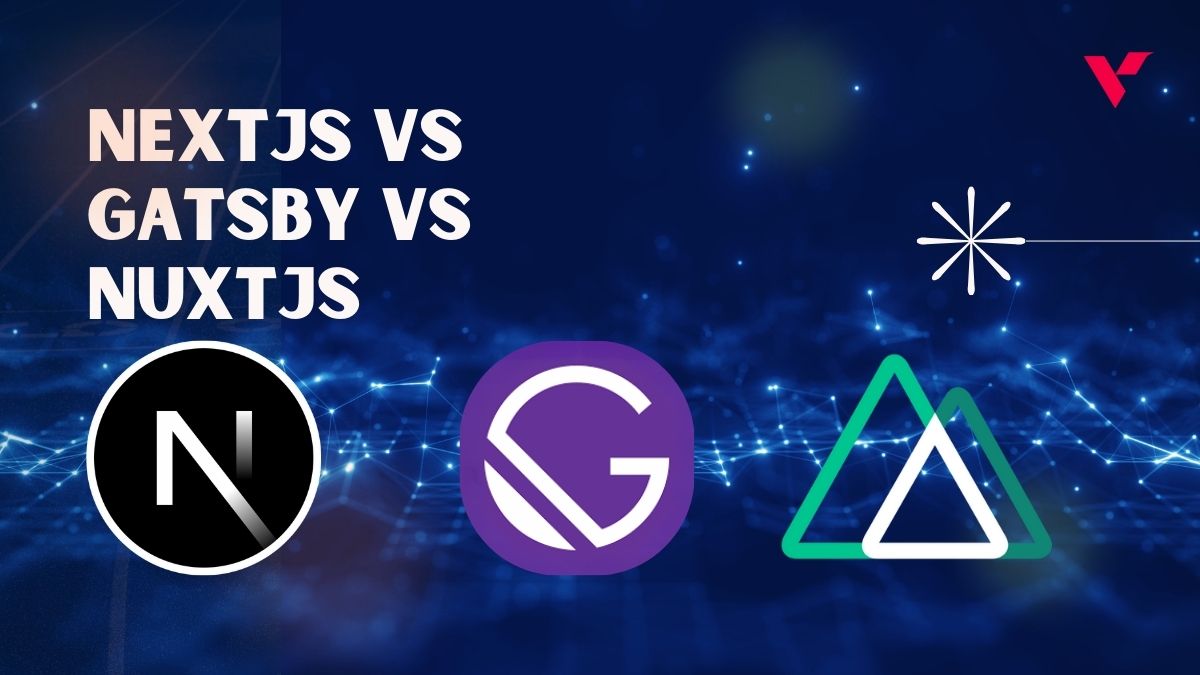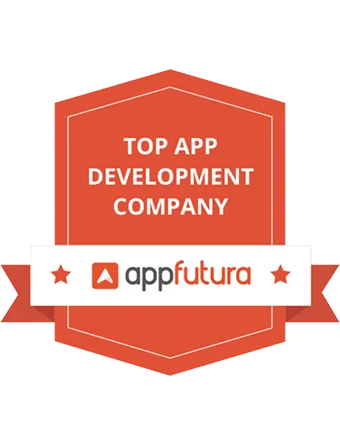Popular Tools by VOCSO
Data mining is an essential tool for modern businesses, enabling them to analyze massive datasets to extract meaningful insights, identify patterns, and drive actionable strategies. By combining techniques from machine learning, statistics, and database systems, data mining techniques empowers businesses to make data-driven decisions.
Table of Contents
What is Data Mining?
Data mining involves examining and analyzing large datasets to uncover hidden patterns and trends that are not immediately apparent. It is not merely about collecting data but also about interpreting it to make predictions, solve problems, and generate value for businesses. Data mining enhances custom web development by analyzing user behavior to optimize website navigation and performance, leading to improved user experiences. Data mining also helpful in custom cms development, as it provides insights into market trends and customer preferences, enabling businesses to tailor content effectively and maintain a competitive edge.
For example:
A retailer might analyze transaction records to understand purchasing behavior and predict future sales trends, or a financial institution could use data mining to detect fraudulent transactions by identifying anomalies in spending behavior.
Core Objectives of Data Mining
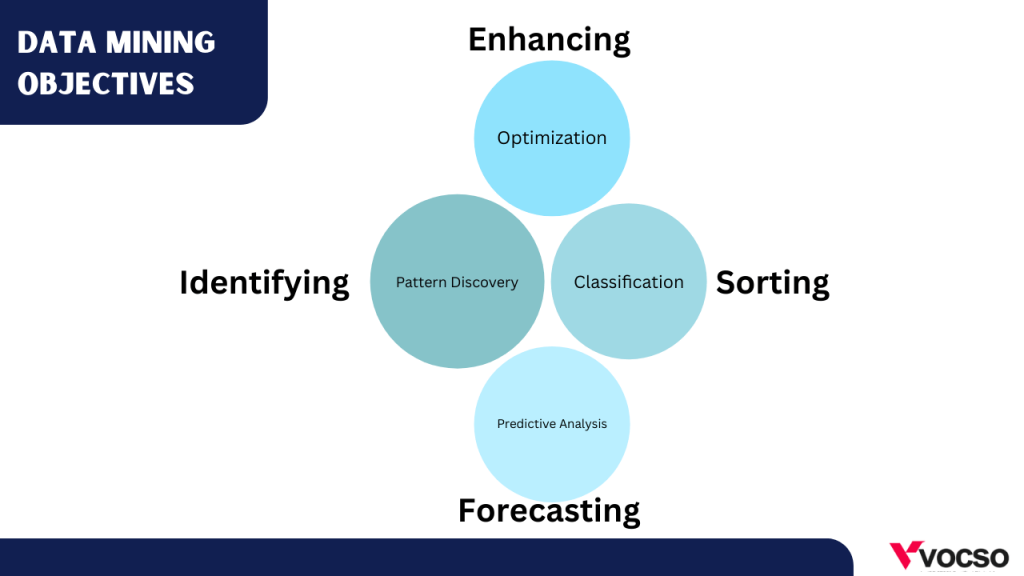
Pattern Discovery: Identifying recurring trends or patterns within the data, such as customer buying habits.
Predictive Analysis: Forecasting future events or behaviors, such as customer churn or product demand.
Classification: Sorting data into predefined categories, such as identifying emails as spam or legitimate.
Optimization: Enhancing business processes by identifying inefficiencies and opportunities for improvement.
Techniques and Methods in Data Mining
Data mining techniques facilitates the analysis of user behavior and preferences, enabling developers for better mobile app development. Data mining techniques, extracting valuable information from web data, allows for the enhancement of user experience and the optimization of web services helping in providing curated data for web application development. A wide range of techniques is employed in data mining, each suited to different types of problems and datasets:
Clustering
| Purpose | Grouping similar data points into clusters |
| Application | Customer segmentation in marketing. Businesses group customers based on purchasing behavior, allowing them to tailor marketing strategies for each segment |
Classification
| Purpose | Assigning items to predefined categories |
| Application | Financial institutions use classification algorithms to assess the creditworthiness of loan applicants |
Regression
| Purpose | Predicting a continuous value based on input variables |
| Application | Real estate companies use regression to predict property prices based on location, size, and other factors |
Association Rule Mining
| Purpose | Discovering relationships between variables in a dataset |
| Application | Retailers use this technique in market basket analysis to identify products frequently purchased together (e.g., bread and butter) |
Anomaly Detection
| Purpose | Identifying data points that deviate significantly from the norm |
| Application | Fraud detection in banking, where unusual transactions are flagged for review |
Sequential Pattern Mining
| Purpose | Analyzing sequences to identify trends over time |
| Application | E-commerce platforms analyze browsing and purchase history to suggest products customers are likely to buy next |
The Data Mining Process
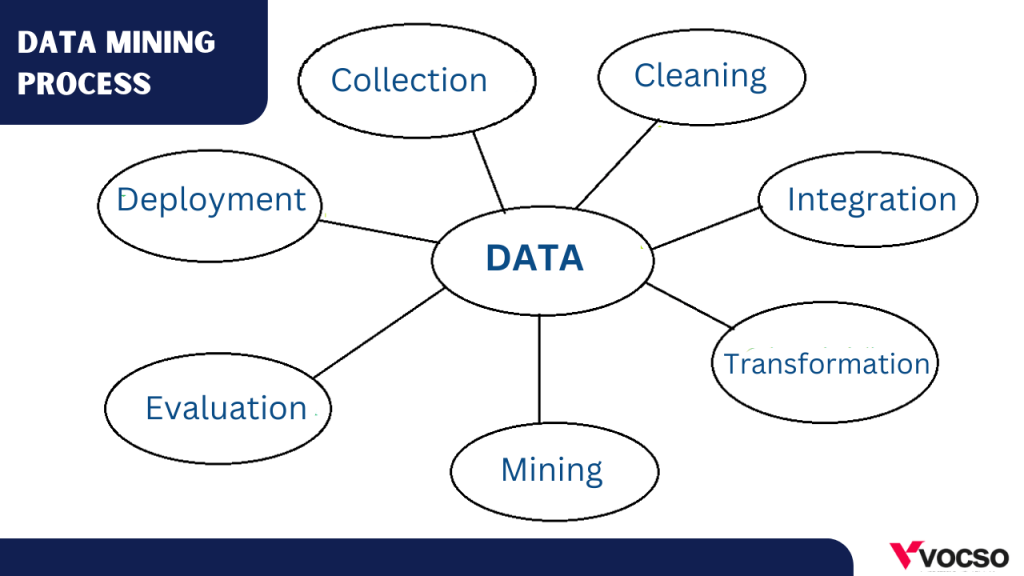
The data mining process typically involves the following steps:
Data Collection
Businesses collect data from various sources such as:
- Customer transaction records
- Website interactions
- Social media platforms
- Internet of Things (IoT) devices
Data Cleaning
Raw data often contains errors, duplicates, and missing values. Cleaning the data ensures it is accurate and ready for analysis. For example:
- Filling in missing values
- Removing duplicate entries
- Correcting inconsistencies in formats (e.g., date formats)
Data Integration
Combining datasets from multiple sources ensures a unified view. For instance, a retail chain might integrate online and in-store sales data to get a comprehensive view of customer behavior.
Data Transformation
Data is transformed into a format suitable for analysis. This step may involve:
- Normalizing numerical values
- Encoding categorical variables
- Aggregating data by time periods or categories
Data Mining
Algorithms are applied to the prepared data to discover patterns, relationships, and trends. The choice of algorithm depends on the specific business problem.
Evaluation
The results are evaluated to ensure their accuracy and relevance. This might involve statistical validation or comparing the results with real-world outcomes.
Deployment
Insights are implemented into business processes. For example:
- A marketing team uses customer segmentation insights to launch personalized campaigns.
- An operations team optimizes inventory levels based on demand forecasts.
Popular Tools for Data Mining
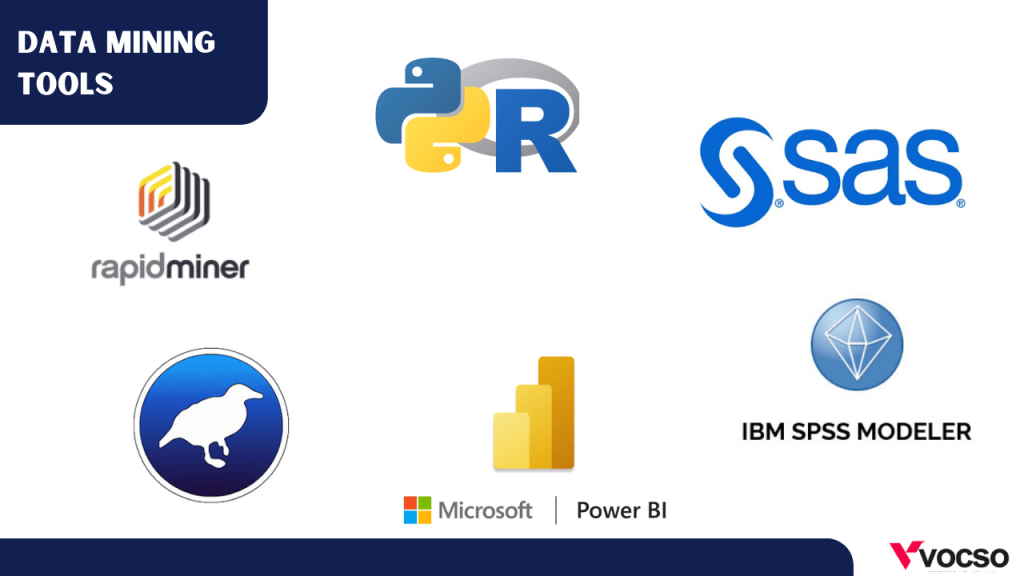
Several tools and platforms are widely used for data mining, ranging from open-source solutions to enterprise-grade software. Each tool has its strengths, tailored to specific business needs.
Open-Source Tools
These are cost-effective and highly customizable, making them a popular choice for businesses with technical expertise.
Python and R
Overview: Both Python and R are programming languages widely used for data analysis and mining.
Applications: Python excels in machine learning and web scraping, while R is renowned for statistical modeling and visualization.
Example Libraries:
Python: Pandas, Scikit-learn, TensorFlow
R: ggplot2, caret, randomForest
RapidMiner
Overview: An end-to-end data science platform supporting tasks like data preparation, machine learning, and deployment.
Features: Drag-and-drop interface, automated workflows, and integration with other tools like Python.
WEKA
Overview: A data mining tool specifically designed for machine learning.
Applications: Ideal for classification, regression, clustering, and visualization.
Enterprise Solutions
For larger organizations, enterprise tools provide scalability, robust security, and advanced analytics capabilities.
SAS (Statistical Analysis System)
Overview: A comprehensive analytics platform for data mining and predictive modeling.
Applications: Used extensively in industries like finance, healthcare, and retail.
Example: Banks use SAS to detect fraudulent credit card transactions in real-time.
IBM SPSS Modeler
Overview: A user-friendly platform for data mining and predictive analytics.
Applications: Customer segmentation, churn analysis, and demand forecasting.
Microsoft Power BI
Overview: A powerful business intelligence tool with data visualization and reporting capabilities.
Applications: Enables data mining insights to be presented in an accessible and interactive format for decision-makers.
Key Algorithms Used in Data Mining
The effectiveness of data mining heavily relies on the algorithms employed. Here are some commonly used algorithms and their business applications:
Decision Trees
| Algo Purpose | A tree-like structure that splits data into branches based on conditions |
| Application | Loan approval processes in banks, where each node represents a decision point (e.g., credit score threshold) |
K-Means Clustering
| Algo Purpose | Groups data points into clusters based on their similarity |
| Application | Segmenting retail customers based on purchasing patterns to identify high-value customer groups |
Apriori Algorithm
| Algo Purpose | Identifies association rules to uncover relationships between variables |
| Application | Market basket analysis in retail (e.g., finding that customers who buy diapers also tend to buy baby wipes) |
Support Vector Machines (SVM)
| Algo Purpose | A supervised learning model for classification and regression tasks |
| Application | Email filtering to classify messages as spam or legitimate |
Neural Networks
| Algo Purpose | Mimics the structure of the human brain to identify complex patterns |
| Application | Used in image recognition, voice processing, and advanced predictive analytics |
Random Forest
| Algo Purpose | Combines multiple decision trees to improve accuracy and prevent overfitting |
| Application | Predicting stock prices or customer churn rates |
Role of Big Data in Modern Data Mining
Big data has transformed the scope and scale of data mining. Traditional data mining focused on structured datasets, but with the rise of big data, businesses now deal with massive, unstructured datasets from diverse sources. With the role of big data in modern data mining, API driven data analysis allows businesses to efficiently process and derive insights from massive, unstructured datasets, significantly enhancing decision making capabilities.
Characteristics of Big Data
Volume: Large amounts of data generated daily (e.g., social media posts, transaction records).
Variety: Diverse formats, including text, images, videos, and sensor data.
Velocity: High speed at which data is generated and needs to be processed in real-time.
Veracity: Ensuring data accuracy and reliability despite its vast scale.
Big Data Technologies
Hadoop and Spark: Frameworks for storing and processing big data.
NoSQL Databases: Databases like MongoDB and Cassandra, designed to handle unstructured data.
Cloud Computing: Platforms like AWS and Azure offer scalable storage and computational power.
Case Studies – Data Mining
Amazon(Personalized Recommendations)
Amazon uses collaborative filtering techniques to suggest products based on a customer’s purchase history and the behavior of similar users. This has significantly boosted cross-selling and customer retention.
Walmart(Demand Forecasting)
Walmart employs data mining to analyze historical sales data, weather patterns, and local events. For instance, before hurricanes, the company discovered increased sales of flashlights and Pop-Tarts, allowing them to optimize inventory.
Netflix(Content Recommendations)
Netflix analyzes viewing history and ratings to recommend movies and TV shows. This personalized experience has been a key factor in its global success.
Advanced Data Mining Techniques
Deep Learning for Unstructured Data
Deep learning, a subset of machine learning, uses artificial neural networks to process and analyze unstructured data such as images, videos, and text. Unlike traditional data mining methods, deep learning models can automatically extract features from raw data, making them highly effective for complex datasets.
Applications:
Image recognition for medical diagnostics (e.g., detecting tumors in X-rays).
Natural language processing for sentiment analysis and chatbots.
Video analysis for surveillance and security.
Reinforcement Learning
Reinforcement learning (RL) is a machine learning technique where algorithms learn by interacting with an environment and receiving feedback in the form of rewards or penalties. It is particularly useful for dynamic decision-making scenarios.
Applications:
Optimizing supply chain logistics.
Personalizing user experiences in real-time, such as dynamic pricing on e-commerce platforms.
Managing energy consumption in smart grids.
Time Series Analysis
Time series analysis focuses on analyzing sequential data over time to identify trends, patterns, and seasonality.
Applications:
Stock market prediction based on historical price trends.
Forecasting sales for retail businesses.
Monitoring equipment performance in manufacturing to predict failures.
Text Mining and NLP
Text mining involves extracting meaningful insights from textual data, while NLP(Natural Language Processing) focuses on understanding and processing human language.
Applications:
Analyzing customer feedback from social media, surveys, and reviews.
Detecting fake news and misinformation.
Automating customer support through AI-driven chatbots.
Graph Mining
Graph mining analyzes data represented as a network of nodes and edges. This technique is particularly valuable for understanding relationships and interactions within datasets.
Applications:
Social network analysis to identify influencers and communities.
Fraud detection by analyzing transaction networks.
Recommendation systems in e-commerce and streaming platforms.
Ensemble Methods
Ensemble methods combine multiple machine learning models to improve predictive accuracy and robustness.
Applications:
Predicting loan defaults in the finance industry.
Diagnosing diseases based on medical imaging and patient history.
Enhancing fraud detection systems by reducing false positives.
Applications of Data Mining Across Industries
Banking and Finance
Data mining plays a critical role in managing risks, detecting fraud, and enhancing customer experiences in the financial sector.
- Fraud Detection: Banks use anomaly detection techniques to identify suspicious transactions in real-time.
- Credit Scoring: Classification algorithms assess the creditworthiness of individuals and businesses.
- Investment Analysis: Predictive models analyze market trends to guide investment strategies.
Retail and E-Commerce
Retailers leverage data mining to optimize operations and improve customer satisfaction.
- Market Basket Analysis: Retailers identify product combinations frequently purchased together to improve cross-selling and upselling.
- Personalized Marketing: Data mining helps create tailored marketing campaigns based on customer preferences.
- Inventory Management: Predictive analytics optimize stock levels and reduce waste.
Healthcare
In healthcare, data mining is transforming patient care, diagnosis, and resource management.
- Predictive Healthcare Analytics: Hospitals predict patient admission rates to allocate resources efficiently.
- Drug Discovery: Analyzing chemical and genetic data accelerates drug development.
- Patient Risk Analysis: Identifying individuals at high risk of chronic diseases enables early intervention.
Telecommunications
Telecom companies use data mining to manage customer relationships and network performance.
- Churn Prediction: Predicting customer churn helps retain subscribers through targeted retention strategies.
- Network Optimization: Analyzing network traffic patterns ensures seamless connectivity and reduces downtime.
- Usage Analysis: Data mining identifies popular services and peak usage times.
Manufacturing
In manufacturing, data mining improves operational efficiency and product quality.
- Predictive Maintenance: Analyzing sensor data from machinery prevents breakdowns and reduces downtime.
- Quality Control: Identifying patterns in production data helps detect defects early.
- Supply Chain Optimization: Data mining enhances supply chain visibility and reduces costs.
Challenges and Limitations of Data Mining
Despite its benefits, data mining has several challenges that businesses must address:
Data Quality Issues
Incomplete, inconsistent, or noisy kind of data can lead to inaccurate results. Ensuring data quality through cleaning and preprocessing is crucial.
Scalability
As data volumes grow, scaling data mining algorithms to handle large datasets becomes increasingly challenging.
Interpretability
Complex algorithms, such as deep learning models, often lack transparency, making it difficult to explain their decisions to stakeholders.
Data Privacy
Collecting and analyzing personal data raises ethical concerns and regulatory challenges. Businesses must comply with data protection laws such as GDPR and CCPA.
Integration with Business Processes
Extracting insights is only the first step. Integrating these insights into decision-making processes and workflows requires careful planning and collaboration across departments.
Future Trends in Data Mining
The field of data mining is constantly evolving, driven by advancements in technology and changing business needs. Here are some trends that will shape its future:
AI-Powered Data Mining
Artificial intelligence (AI) will enable more efficient and accurate data mining by automating complex tasks and improving pattern recognition.
Example: AI-driven platforms can analyze unstructured data, such as images and audio, more effectively than traditional methods.
Real-Time Analytics
As businesses demand faster insights, real-time data mining will become increasingly important.
Example: Retailers can adjust pricing dynamically based on real-time demand and competitor pricing.
Edge Computing
Edge computing allows data to be processed closer to its source, resulting in lower latency and faster decision-making.
Example: IoT devices in manufacturing can analyze data on-site to detect anomalies in real-time.
Integration with Blockchain
Blockchain technology enhances data mining by providing secure, transparent, and tamper-proof data records.
Example: In supply chain management, blockchain ensures the authenticity of data used for mining insights.
Ethical AI and Data Governance
As data mining becomes more widespread, ethical considerations and governance frameworks will play a critical role in ensuring responsible use.
Example: Companies will adopt tools to audit algorithms for biases and ensure compliance with data protection regulations.
Conclusion
Data mining has revolutionized business analytics by enabling organizations to extract actionable insights from vast datasets. From basic classification and clustering to advanced techniques like deep learning and reinforcement learning, the field continues to evolve rapidly. By leveraging the right tools, addressing ethical concerns, and staying ahead of emerging trends, businesses can unlock the full potential of data mining to drive innovation and maintain a competitive edge in the market.


